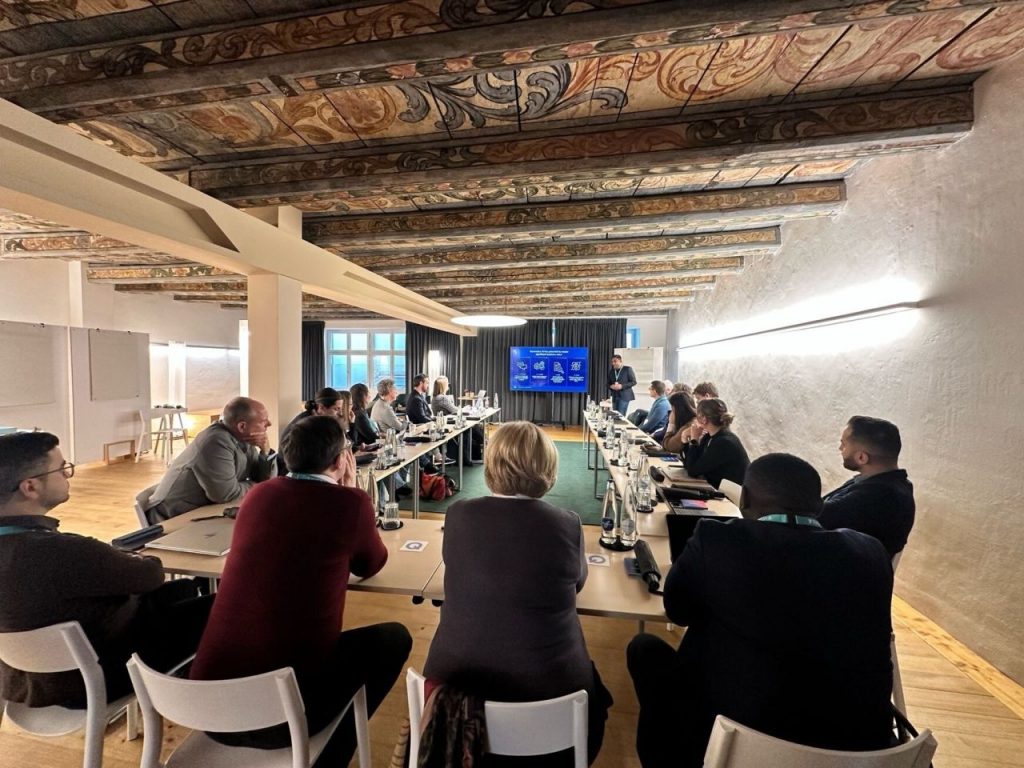On March 17, RWS hosted the Q Innovation Workshop in Basel, Switzerland, bringing together pharmaceutical industry leaders from around the world to collaborate on innovation and business challenges in the clinical and regulatory landscape. The interactive event provided a forum for in-depth discussions on structured content authoring, data management, AI automation, localization, and the future of regulatory documentation.
Participants explored a wide range of topics, including digital transformation, cloud infrastructure, patient-centric content, and evolving translation requirements in global organizations. The workshop also addressed how life sciences companies can better align structured content and data strategies to enhance operational efficiency and regulatory compliance.
Dan Herron from RWS started the workshop by discussing recent RWS research showing that 36% of executives see a danger of enterprise resources—that could be better deployed elsewhere—being diverted toward Gen AI. Execs in highly regulated industries worry about deploying resources to Gen AI without guardrails.
Building trust in AI adoption for life sciences
One of the workshop’s highlights was a panel discussion moderated by Chip Gettinger (RWS) featuring Dominik Berroth (Roche) and Laurent Lefebre (Novartis). The session emphasized the importance of aligning structured content, content reuse, and data architecture to support enterprise-wide innovation.
“Structured content enables efficiency, improved accuracy, and consistency across content and data,” noted Gettinger. “Automation of manual processes is key to reducing time and effort in document creation and review.”
The discussion also addressed the pharmaceutical industry’s shift from traditional document-based processes toward more data-centric and digital-first approaches. Speakers shared insights from digital transformation programs underway at their organizations, highlighting the role of structured content in supporting interoperability standards like FHIR and electronic Product Information (ePI).
The session concluded with a forward-looking exploration of AI innovation in pharma, including real-world applications and lessons learned from ongoing projects. Industry leaders acknowledged the growing interest in AI and stressed the need for strong governance and guardrails to mitigate risk—particularly in highly regulated environments.
GenAI opportunities for pharmaceutical innovation

Arun Nallathambi from Amazon Web Services (AWS) presented on generative AI (GenAI) trends and potential use cases across the pharmaceutical value chain. Key opportunities discussed included:
- Accelerating Drug Discovery and Clinical Development: Using AI to identify drug candidates, optimize molecular properties, and automate knowledge sharing.
- Optimizing Clinical Workflows and Patient Engagement: Leveraging AI to process clinician-patient interactions and streamline medical documentation and coding.
- Driving Operational Efficiency: Improving manufacturing outcomes by using AI for defect detection, data synthesis, and continuous learning.
Nallathambi also addressed the importance of scaling AI projects beyond pilot phases, emphasizing the need for measurable business value, optimization strategies, and robust risk management frameworks.
The strategic value of structured content authoring
Structured content authoring (SCA) continues to gain traction in regulatory and clinical settings due to its ability to enhance content consistency, reduce authoring time, and improve collaboration.
“Pharmaceutical organizations face increasing pressure to accelerate content delivery and minimize errors,” said Gettinger. “By managing content as reusable components, teams can take a ‘write once, reuse many times’ approach—reducing duplication and improving quality.”
Key benefits of structured content adoption discussed at the workshop included:
- Template Management: Reducing the number of templates by enabling variations from a single source.
- Collaborative Authoring: Enabling concurrent editing and reviewing across distributed teams.
- Content Reuse and Branching: Facilitating reuse of components across multiple documents while maintaining traceability.
- Multi-format Output: Supporting exports to formats such as Word, PDF, XML, and FHIR from a single source.
Enhancing data management with semantic knowledge graphs

Raphael Sergent from ACCURIDS presented on the intersection of data management and structured content, focusing on the value of semantic knowledge graphs and FAIR data principles. His presentation highlighted how centralized data governance, master data models, and globally unique identifiers (GUPRIs) can support regulatory compliance, accelerate clinical trials, and improve collaboration across stakeholders.
Use cases included the integration of labeling and artwork workflows, automated data harmonization, and structured semantic graph-driven document generation.
Innovation workshop: identifying challenges and opportunities
An interactive workshop session, led by Chip Gettinger and Jill Balcerzak of RWS, invited participants to identify and prioritize key challenges facing their organizations. Topics included content reuse, legacy content conversion, regulatory data management (RDM), master data management (MDM), document comparison, and health authority monitoring.
Participants outlined a shared vision for improvements that would enhance responsiveness, reduce manual effort, and increase the speed of regulatory processes. Stakeholders most affected included regulatory affairs teams, structured content authoring users, and, ultimately, patients.
Conclusion: from experiments to scalable innovation
The Q Innovation Workshop underscored the growing momentum behind AI and structured content adoption in the life sciences. From aligning data models to implementing digital-first authoring strategies, pharmaceutical companies are taking concrete steps to modernize how they create, manage, and deliver content.
As Gettinger concluded, “Structured content, combined with robust data models, forms a strong foundation for applying AI more effectively. These innovations improve operational efficiency and enhance the quality and consistency of regulatory content, creating value for patients and regulatory teams alike.”
RWS is organizing upcoming innovation workshops in Amsterdam, Dublin, and New York. If you are interested in attending, please email us at events@rws.com.

